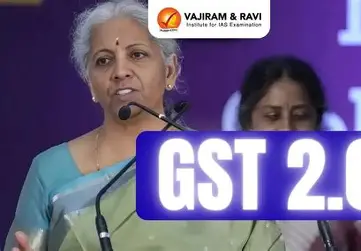GST 2.0 Launched: Govt Projects ₹20 Lakh Crore Boost to GDP”
India Unveils GST 2.0: Major Tax Reform Aimed at Boosting Growth and Simplifying Taxation
New Delhi, September 7, 2025 – In a landmark decision, the Indian government has passed a sweeping overhaul of the Goods and Services Tax (GST) regime, dubbed GST 2.0. This reform is being hailed as a game-changer for India’s tax landscape, aimed at simplifying tax slabs, boosting domestic consumption, and stimulating economic growth.
Key Features of the GST 2.0 Reform
✅ Simplified Tax Slabs
-
The previous four-tier GST structure (5%, 12%, 18%, and 28%) has been streamlined into just two primary slabs: 5% and 18%.
-
A new 40% “super luxury” slab has been introduced for items like high-end cars, cigarettes, and aerated drinks.
-
Essential household items like toothpaste and shampoo now fall under the 5% slab, while electronics and most consumer goods are under 18%
Electric Vehicle (EV) Incentives
-
Electric vehicles will continue to attract a minimal 5% GST, reinforcing India’s push towards a greener future.
Impact on Luxury Goods
-
Items such as cigarettes, luxury cars, and sugary soft drinks will be taxed at 40%, reinforcing the government’s “sin tax” policy to discourage unhealthy or luxury consumption
Boost to Agriculture & MSMEs
-
The government estimates that this reform will benefit over 10 crore (100 million) dairy farmers and small agricultural producers.
-
The move is also expected to aid small traders, artisans, and MSMEs with simpler compliance and better cash flow.
-
Exporters in the rice and agri sectors welcomed quicker GST refunds and lower working capital blockage.
Industry Response
-
The Confederation of Indian Industry (CII) called GST 2.0 a “game-changer” for sectors like electronics, handloom, and MSMEs.
-
Auto giants like Toyota, Tata Motors, and Mercedes-Benz announced immediate price cuts of up to ₹10–15 lakh on select models due to reduced GST rates.
Economic Implications
-
Finance Minister Ashwini Vaishnaw said GST 2.0 could add up to ₹20 lakh crore (~$240 billion) to India’s GDP in the coming years.
-
While the government may face a revenue shortfall of ₹48,000 crore, economists believe it could bring down inflation by up to 1.1 percentage points.
Implementation Timeline
-
The reforms were announced by Prime Minister Narendra Modi on August 15, 2025 (Independence Day).
-
They will come into effect from September 22, 2025, just before the Navratri festival season—a strategic move aimed at spurring festive demand.
Summary Table
| Aspect | Details |
|---|---|
| Tax Slabs | 5%, 18%, 40% (super luxury) |
| Impacted Sectors | FMCG, Automobiles, Agriculture, MSMEs |
| Beneficiaries | Consumers, Farmers, Traders, Exporters |
| Expected GDP Boost | ₹20 lakh crore (~$240 billion) |
| Revenue Loss Estimate | ₹48,000 crore |
| Inflation Control Estimate | 1.1 percentage point drop |
| Effective Date | September 22, 2025 |
GST 2.0 represents the biggest tax overhaul since the GST was first introduced in 2017. With a focus on simplicity, inclusivity, and economic growth, this reform could serve as a foundation for India’s journey towards becoming a “Viksit Bharat” (Developed India)
